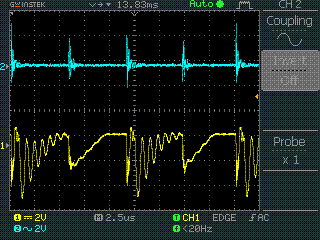Hi,
I am actually designing a 3,3 kW PFC for a Battery Charger and have some problems with the PFC-IC.
The reference voltage varies between 5,8 and 6,3 V dependend on the VINAC voltage. GDA and GDB give no signal out as long as there is an AC Power Supply. As soon as I switch off the AC Power Supply and the VSENSE voltage is still over 0,75 V the GDA output is working on maximum duty cycle. Of course the Mosfet doesn't switch because there is no AC input. The GDB doensn't work at all. As soon as there comes a minimal VINAC voltage the GDA stops working as well.
Can somebody help?
Regards, Otto Kreutzer


